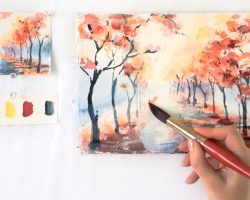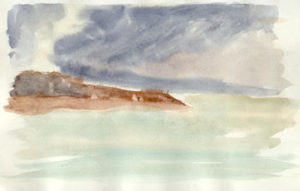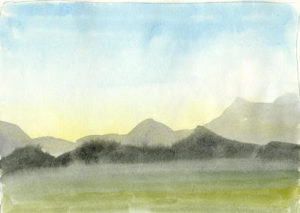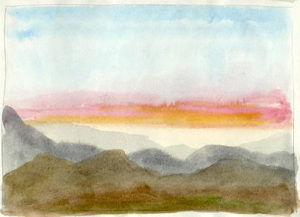
Not Another Watercolour Painting Tutorial
Do We Need Another Watercolour Tutorial?
Need help with watercolour? In this short page, I hope to reveal how I use the process of sketching to develop an eye for a subject and a process for capturing what seems a limitless scene. Constant sketching and varying an approach just to see what something looks like will help all artists who are trying to capture landscapes in watercolour.
Do we need another watercolour tutorial? The easy answer is no! But of course there is always room for an experienced artist ( with a modest outlook) to pass on some of that experience to fellow artists who may just be starting out on a journey of discovery.
I intend to create a series of lenses about sketching subjects ( such as trees, skies, sunsets, sunrise and the use of colours) whilst these are taking shape this lens should be considered a work in progress – thanks.
The accompanying sketch shows a still life painted at a meeting of my art group. This and all other images below are sketched and photographed/scanned by myself.
Why Sketch?
shouldn’t you just go for a finished picture?
Even the great artists sketch…. and the more they do this the better they are likely to be. Turner left many sketches to the nation after his death. Even his skimpiest works show how he was approaching issues like skies and landscapes. The constant sketching will more than repay the investment in time for any artist.
A painting simply called watercolour beginning shows a simple Turner sketch which probably would have been completed in the fullness of time. There are many of these in books and galleries but I have not yet located a web link. ( In fact, a brochure from an exhibition of Turner’s works held at the Tate does have a few things to say about the watercolour beginnings). One other example of a sketch by Turner is shown in this Tate Gallery Blog post which also discusses the faded appearance of the watercolour sketch.
I often simply use up the remains of my palette to create sketches from my imagination – a little like doodling really but it does help to keep my pictorial vocabulary in use and growing. These sketches I call my “Turnerisms”, they show this simplistic doodling approach to landscape subjects. Not something I would frame and hang on the wall but “hey” they were done for fun and practice, and what is life without a little fun now and then. Just for reference they are all from a sketchbook which is about six inches wide, ( the longest dimesion in these sketches).



They were actually done on cartridge paper and so the effect of wet-into-wet washes is not very relevant but having fun and making marks is never a waste of time. In this series of lenses I hope to be showing you many more of my sketches, some in this vein, some looking more like finished works but all have the main objective of teaching me something.
As for the second question above, it is always worth sketching out one or two small thumbnail sketches to decide on compositional features prior to starting any major project/painting. Professionals do it, what makes any amateur think that they don’t need to? read about any major artist and the chances are that he will know what he is going to paint and how he is going to achieve any particular result before he starts. Why take a chance? Of course there are many instances of paintings being changed part way through but by and large even the masters will have made sketches of potential problem areas before the main work is started.
Some examples of what I am saying would be an obvious update to this lens, at the earliest opportunity. watch this space!

